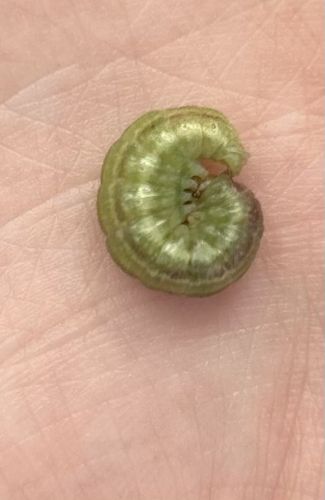Cutworm (larva)
Scientific Name: Various species within the family Noctuidae (e.g., Agrotis ipsilon, Peridroma saucia, Feltia subterranea)
Order & Family: Order: Lepidoptera, Family: Noctuidae
Size: Larvae typically range from 2.5 to 5 cm (1 to 2 inches) in length when fully grown.

Natural Habitat
Cutworms are found in various environments wherever their host plants grow. This includes gardens, agricultural fields, lawns, and natural areas. They typically reside in the soil or under plant debris near the base of plants during the day.
Diet & Feeding
Cutworms are polyphagous, meaning they feed on a wide variety of plants. They get their name from their habit of cutting down young plants at or just below the soil line. They primarily feed on stems and leaves of seedlings and young plants, including many garden vegetables (e.g., tomatoes, beans, corn, cabbage), field crops, and turfgrass.
Behavior Patterns
Cutworms are nocturnal, feeding on plants at night and staying hidden just below the soil surface or under debris during the day. When disturbed, they often curl into a tight C-shape, as seen in the image. They are larval stages of moths and will eventually pupate in the soil to emerge as adult moths.
Risks & Benefits
Potential Risks: Cutworms are significant agricultural and garden pests, capable of causing considerable damage to young plants, leading to crop loss. They can decimate newly planted seedlings overnight. Potential Benefits: While primarily considered a pest, like all insects, they play a role in the food chain, serving as a food source for birds, beneficial insects, and other predators. The adult moths are pollinators, though not as effective as some other insect groups.
Identified on: 8/24/2025